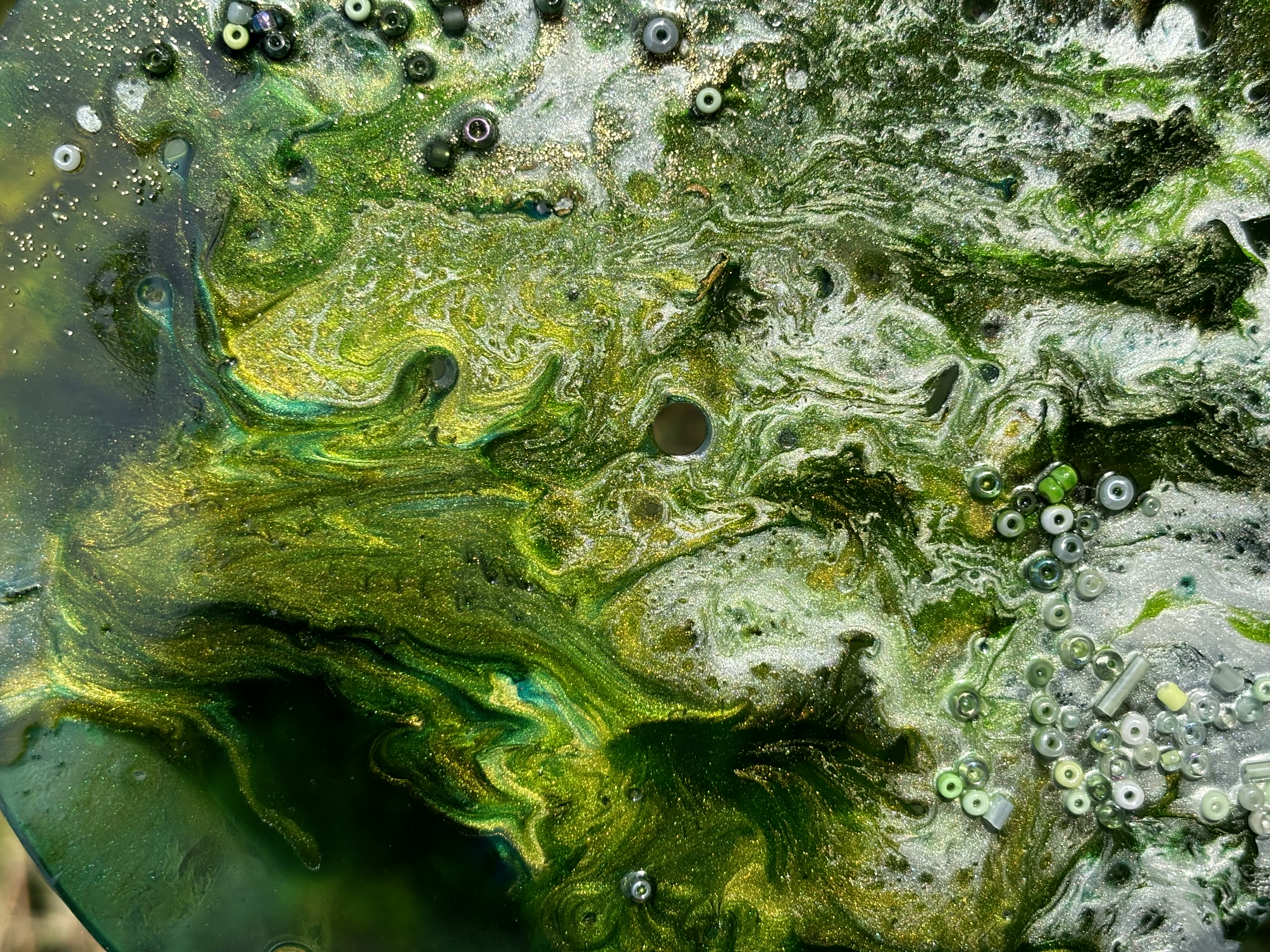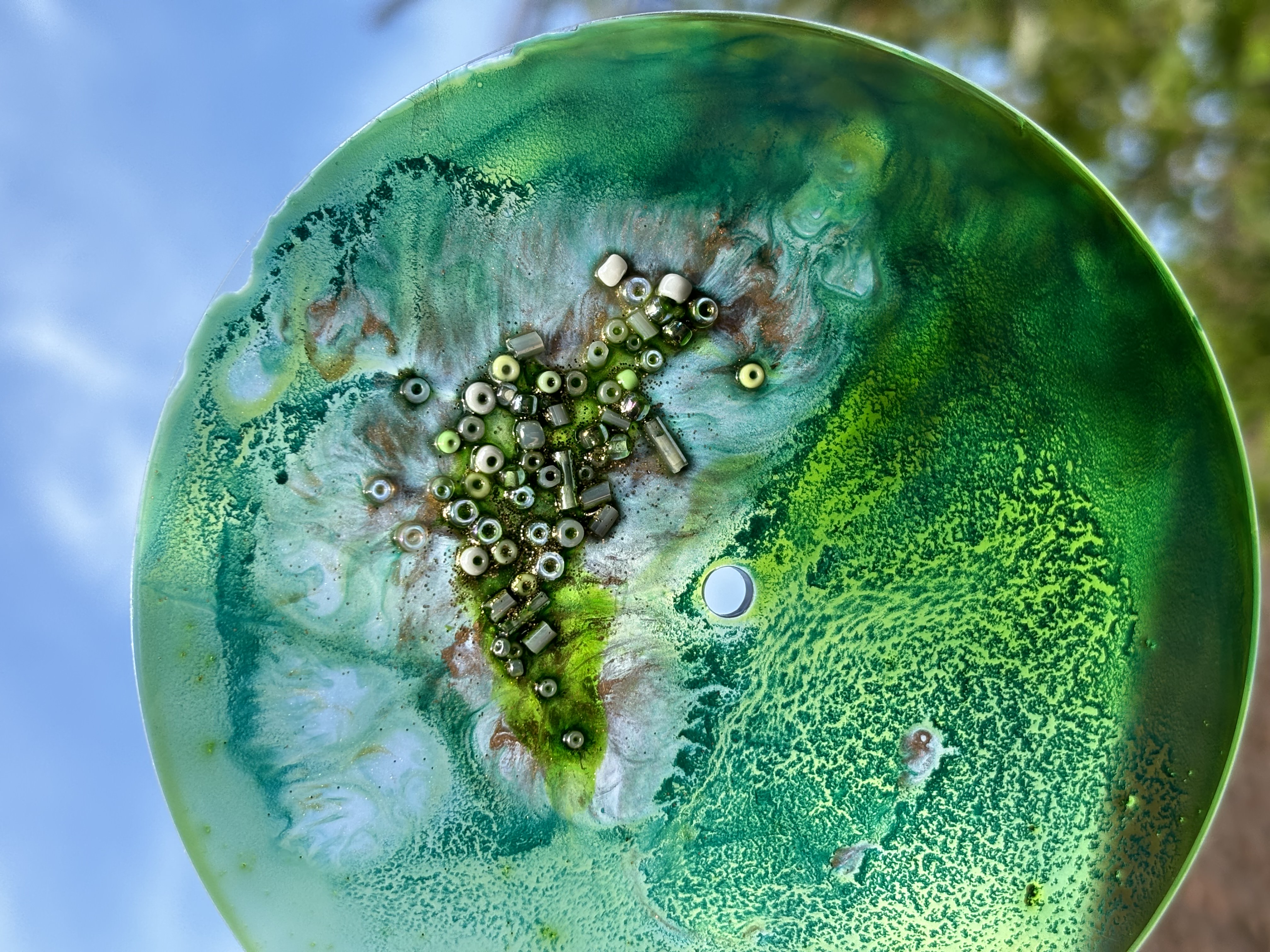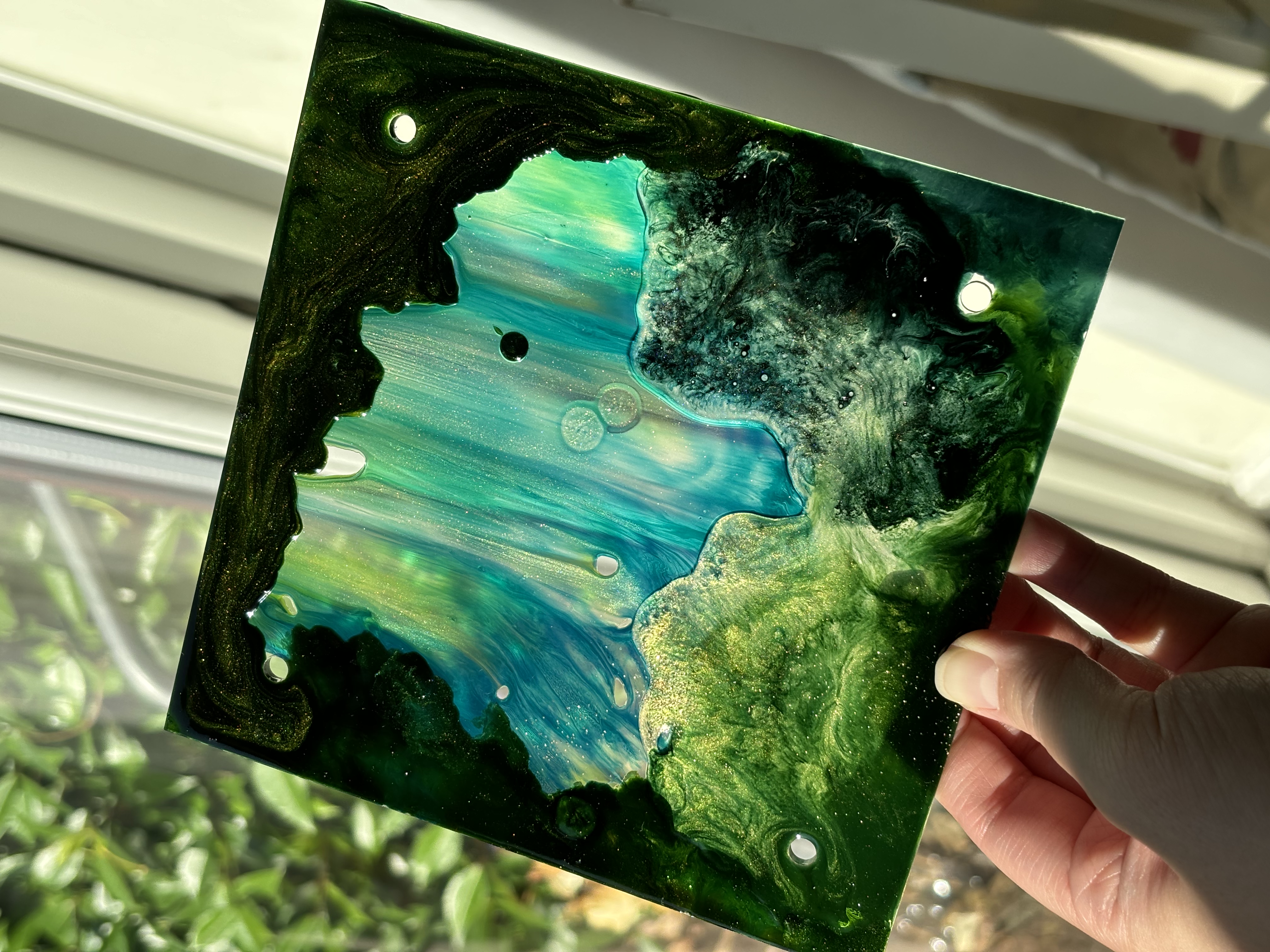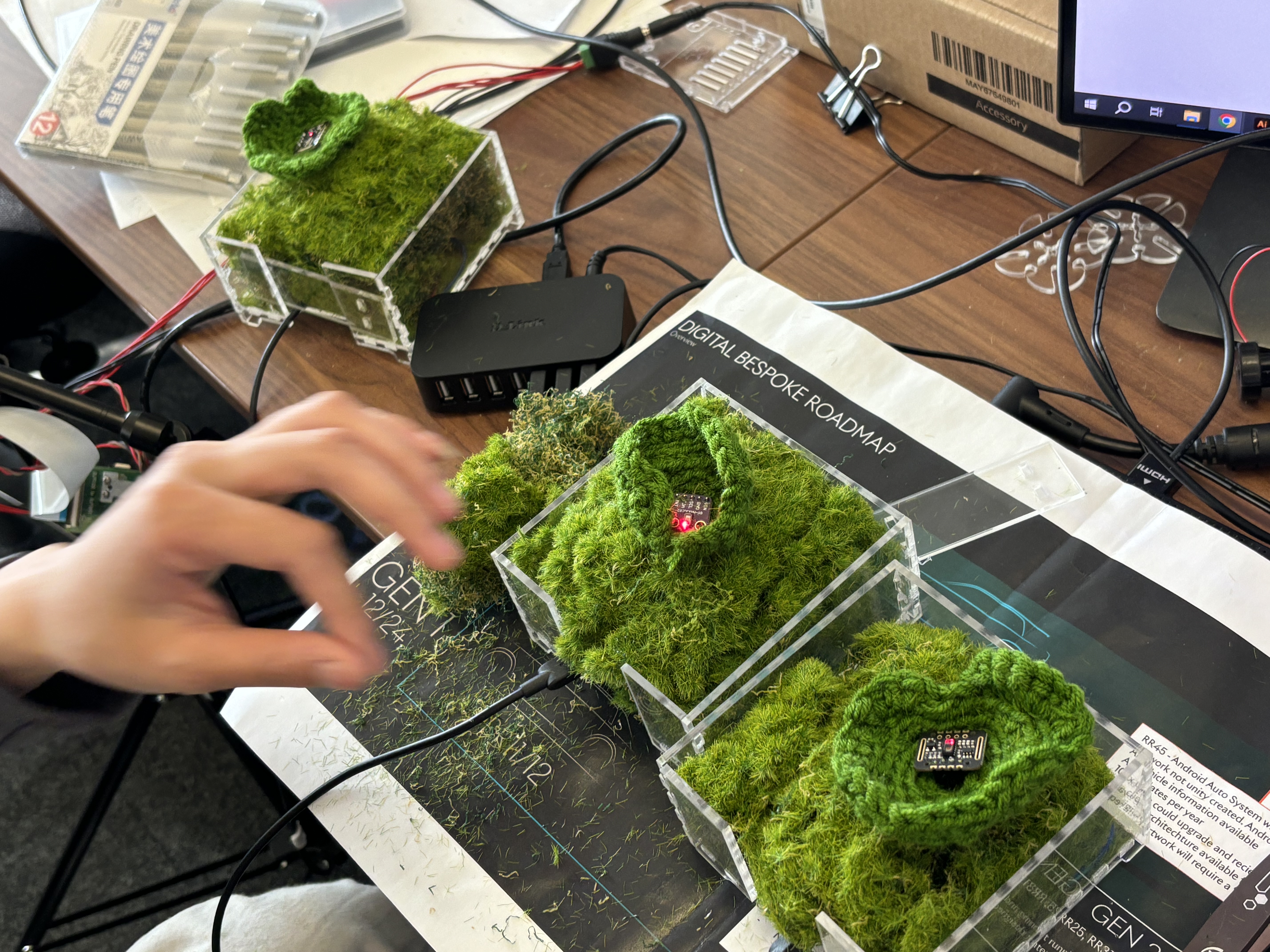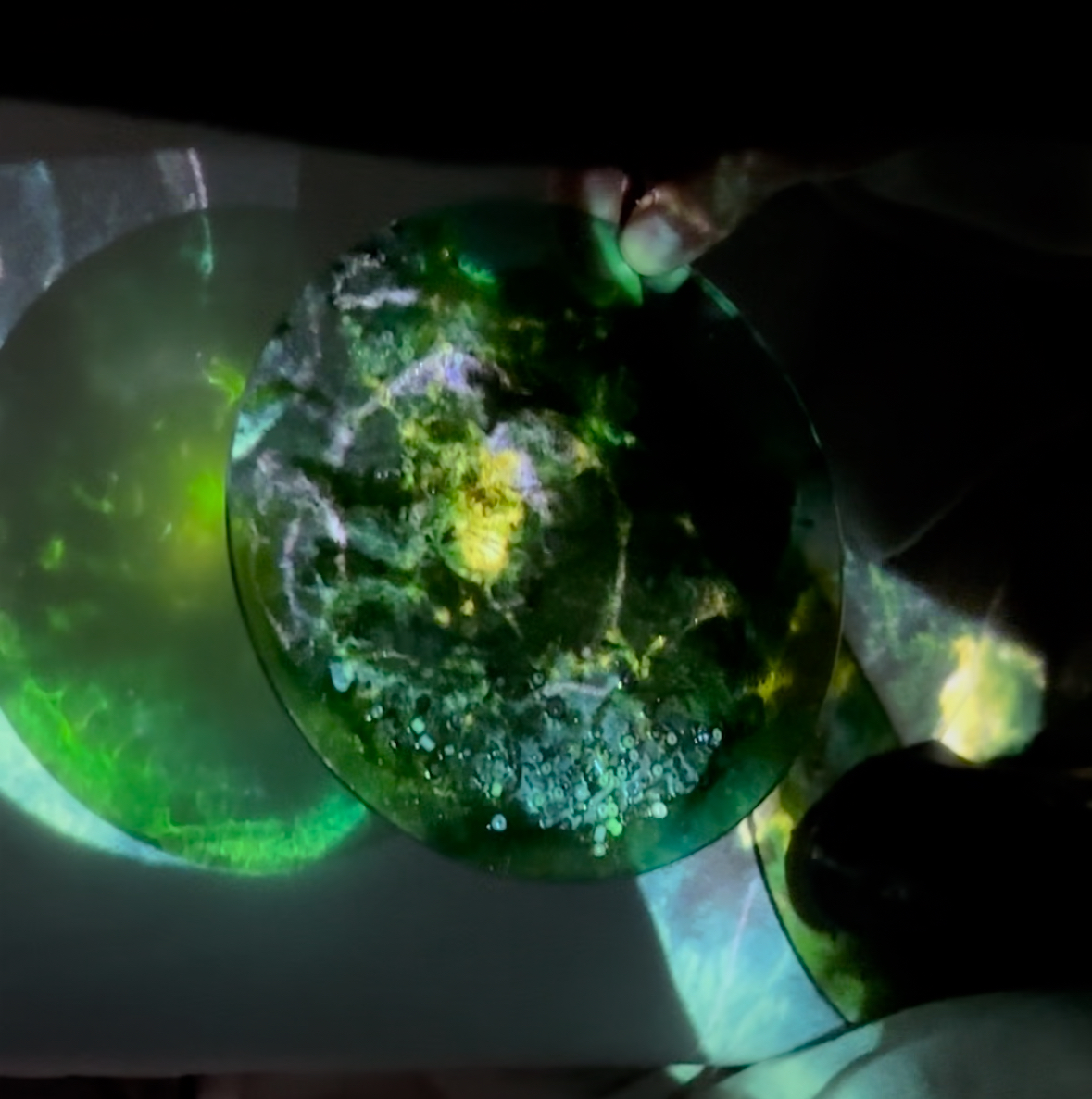Reflection
Physical Installation, NA, 09.2024
Integrated natural elements with digital interactive technology to create a physical installation work. Inspired by the natural form of lotus leaves, used glass - painting hand - drawing techniques to process acrylic substrates into glass paintings of different sizes, providing a physical canvas for digital interaction.
Core Stack: Arduino (C) + TouchDesigner (Python) + Projection Mapping
This project is not affiliated with any projects being undertaken by Rolls-Royce.
